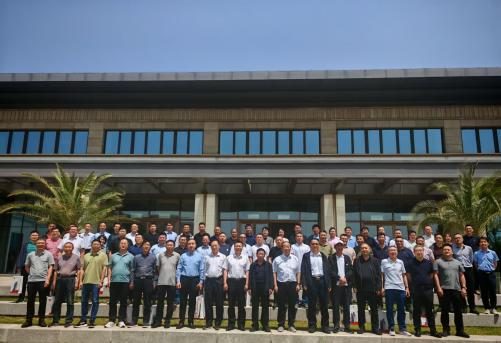Optimizing Vibrating Screens for Non-Ferrous Metal Processing: Key Insights for Industry Professionals
Release Date:
2025-06-04
Vibrating screens are essential components in the mineral processing industry, especially when dealing with non-ferrous metals such as aluminum, copper, and zinc. Their primary function is to separate materials based on size and density, ensuring that only the desired particles proceed to the next stage of processing. Understanding the dynamics of vibrating screens can significantly improve throug
Vibrating screens are essential components in the mineral processing industry, especially when dealing with non-ferrous metals such as aluminum, copper, and zinc. Their primary function is to separate materials based on size and density, ensuring that only the desired particles proceed to the next stage of processing. Understanding the dynamics of vibrating screens can significantly improve throughput and product quality.
When selecting a vibrating screen for non-ferrous metals, a few critical factors must be considered. Firstly, the screen's design, including the shape and size of the mesh openings, influences the material's passage. Different materials require different mesh configurations; for example, finer materials need smaller openings. Furthermore, the choice of screen material is crucial. Screens made from hard-wearing substances like polyurethane or stainless steel can withstand the abrasive nature of non-ferrous metals, thus prolonging the equipment's lifespan.
The screening process's efficiency is also influenced by the vibration frequency and amplitude. Higher frequencies typically facilitate the movement of fine materials, while lower frequencies are more effective for larger particles. Therefore, understanding the material characteristics and desired output is vital in adjusting the vibration parameters for optimal performance.
Moreover, the angle of the screen deck plays a significant role in the material flow and retention time on the screen. A steeper angle may enhance the material's movement and reduce the likelihood of clogging, while a flatter angle can provide more dwell time for effective separation. Adjusting this angle based on the specific properties of the non-ferrous metals being screened is essential for maximizing efficiency.
Maintenance is another critical aspect of operating vibrating screens for non-ferrous metals. Regular checks on the screen's tension, wear patterns, and structural integrity can prevent unexpected downtime and costly repairs. Implementing a predictive maintenance program can help identify potential issues before they escalate, thereby ensuring continuous operation.
In conclusion, optimizing vibrating screens for non-ferrous metal processing involves a comprehensive understanding of the materials, equipment configurations, and operational parameters. By focusing on these aspects, industry professionals can enhance their production capabilities and achieve superior product quality. This commitment to optimizing processes not only boosts efficiency but also positions companies favorably in a competitive market.
When selecting a vibrating screen for non-ferrous metals, a few critical factors must be considered. Firstly, the screen's design, including the shape and size of the mesh openings, influences the material's passage. Different materials require different mesh configurations; for example, finer materials need smaller openings. Furthermore, the choice of screen material is crucial. Screens made from hard-wearing substances like polyurethane or stainless steel can withstand the abrasive nature of non-ferrous metals, thus prolonging the equipment's lifespan.
The screening process's efficiency is also influenced by the vibration frequency and amplitude. Higher frequencies typically facilitate the movement of fine materials, while lower frequencies are more effective for larger particles. Therefore, understanding the material characteristics and desired output is vital in adjusting the vibration parameters for optimal performance.
Moreover, the angle of the screen deck plays a significant role in the material flow and retention time on the screen. A steeper angle may enhance the material's movement and reduce the likelihood of clogging, while a flatter angle can provide more dwell time for effective separation. Adjusting this angle based on the specific properties of the non-ferrous metals being screened is essential for maximizing efficiency.
Maintenance is another critical aspect of operating vibrating screens for non-ferrous metals. Regular checks on the screen's tension, wear patterns, and structural integrity can prevent unexpected downtime and costly repairs. Implementing a predictive maintenance program can help identify potential issues before they escalate, thereby ensuring continuous operation.
In conclusion, optimizing vibrating screens for non-ferrous metal processing involves a comprehensive understanding of the materials, equipment configurations, and operational parameters. By focusing on these aspects, industry professionals can enhance their production capabilities and achieve superior product quality. This commitment to optimizing processes not only boosts efficiency but also positions companies favorably in a competitive market.





